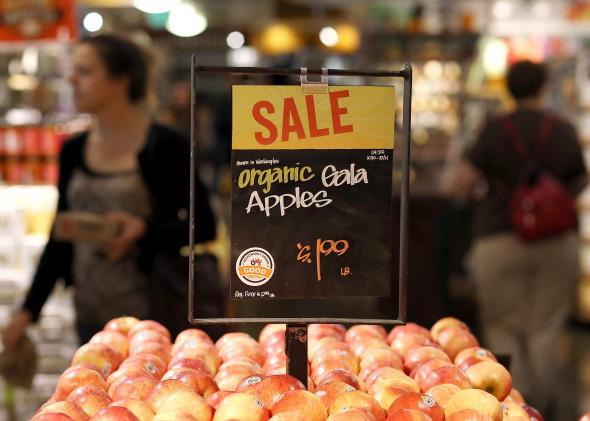Whole Foods is on the hunt for millennials. To bring back younger shoppers and shake its sticky “whole paycheck” image, the troubled company last month said it would create a “hip, cool, technology-oriented store” specifically for the millennial demographic. And at an investor conference on Thursday, the company finally put a name on its new concept: “365 by Whole Foods Market.”
If you’ve ever shopped at Whole Foods, you‘ll probably recognize 365 as the store’s own “everyday value” label. That hints at what Whole Foods is thinking for its new stores, which a spokesman tells me will carry a broad selection of 365 products in addition to other brands. “It’s a very compelling brand, good growth, and we think it has potential to take this name and this number and reflect much further into the marketplace—beyond just around products, and actually around creating a format which is fun, which is exciting, which is modern, which is streamlined, which is cool,” Whole Foods co-CEO Walter Robb said Thursday. The inaugural 365 stores are expected to open in the first half of 2016 in the U.S.
Can Whole Foods woo millennial shoppers with a hip, cool, fun, modern, exciting, streamlined, technology-oriented store? Maybe. But the better question is whether it should even be trying in the first place.
It might surprise you to learn that making “X for Millennials” isn’t a business panacea. Take Pizza Hut, which last fall announced a slightly exotic, vegetable-heavy rebranding targeted toward younger consumers, and has since reported lackluster sales. A few weeks ago, Greg Creed, CEO of Pizza Hut’s parent company Yum Brands, admitted that overhaul was a miscalculation. “Unfortunately, we haven’t been as effective as we’ve liked with our marketing and need to balance its appeal to millennials with mainstream pizza customers,” he said. (In perhaps the greatest sign of defeat, Pizza Hut’s newest marketing stunt is a pizza with a hot-dog-stuffed crust.) When McDonald’s announced its restructuring at the start of May, chief executive Steve Easterbrook made a similar concession, noting that going forward, the chain would engage in “less sweeping talk of millennials.”
With Whole Foods, we still don’t really have any idea what these new 365 stores will look like. While executives are clearly big on buzzy adjectives, they haven’t said how many 365 stores Whole Foods is looking to open, what kind of markets they’ll be in, or how much cheaper—if at all—the merchandise will be. And then there’s the bigger existential question—what does it even mean to make a grocery store for millennials? Lots of kale and Soylent? Receipts that are Snapchatted to you? Venmo-enabled payments? I don’t know; I’m a millennial and I use coupons. The last time Whole Foods got a good response from customers, it was after it lowered prices. Maybe it should stop trying to make things “for millennials,” and focus on giving them some good deals instead.
